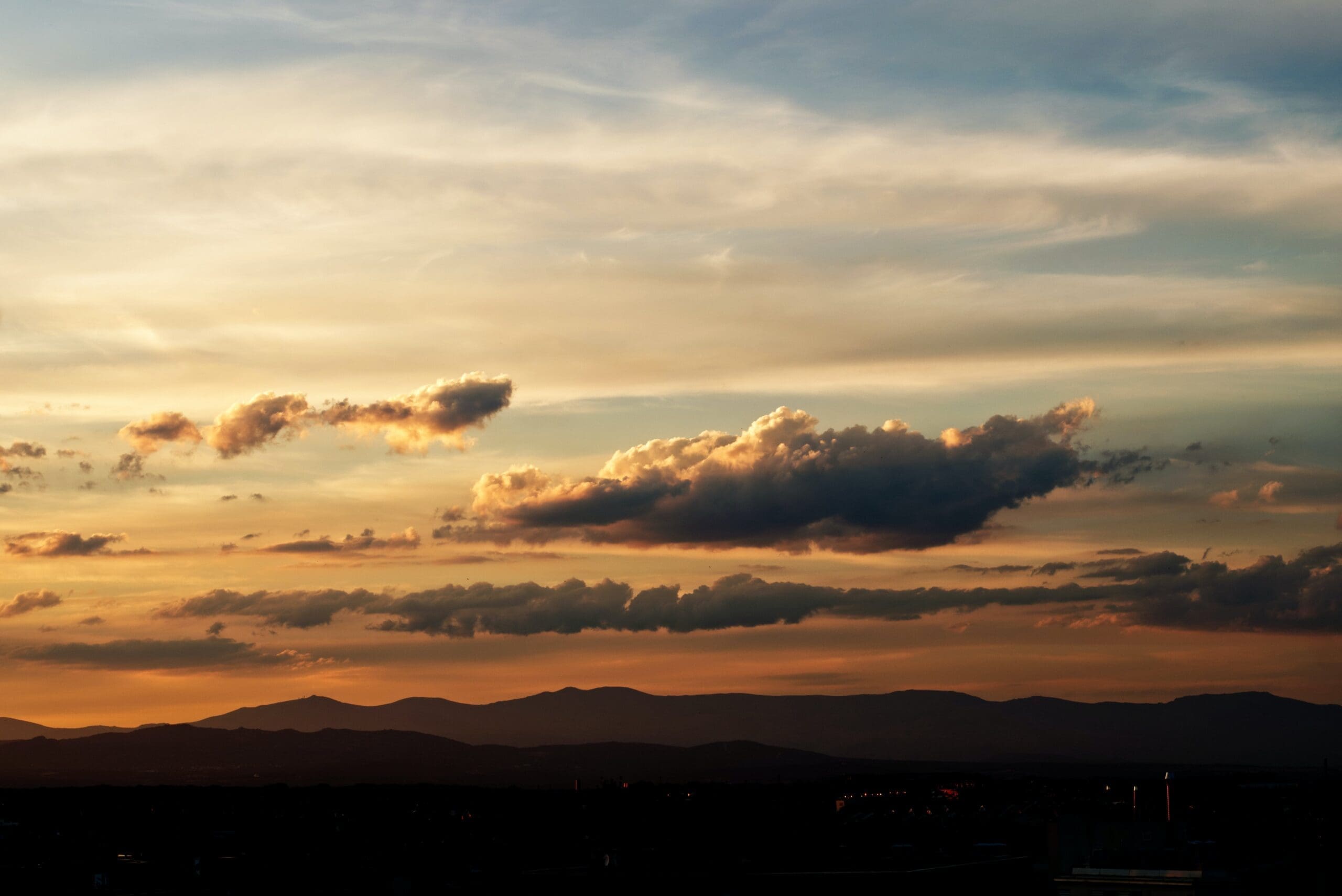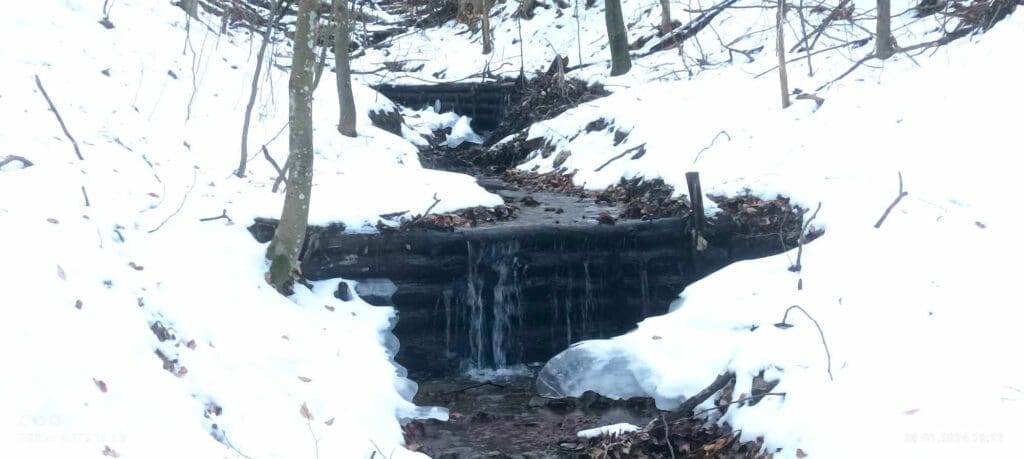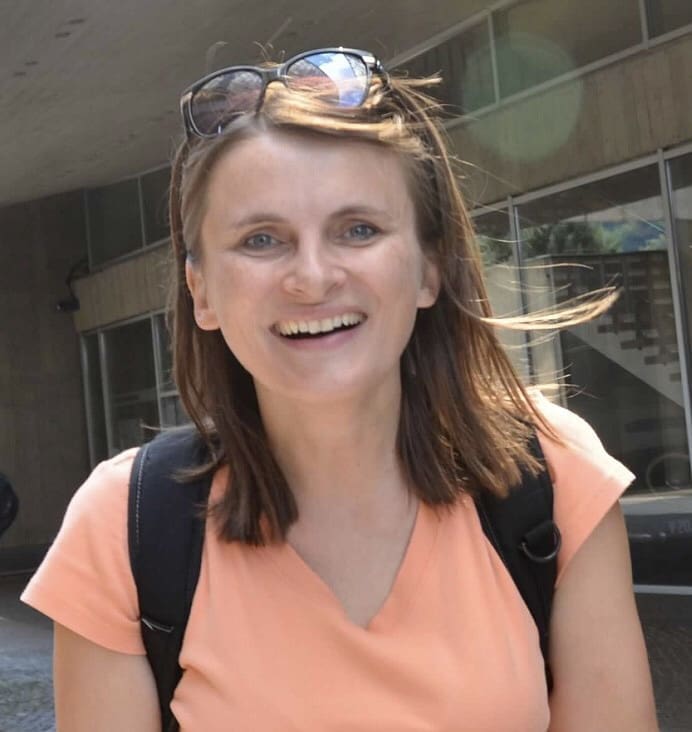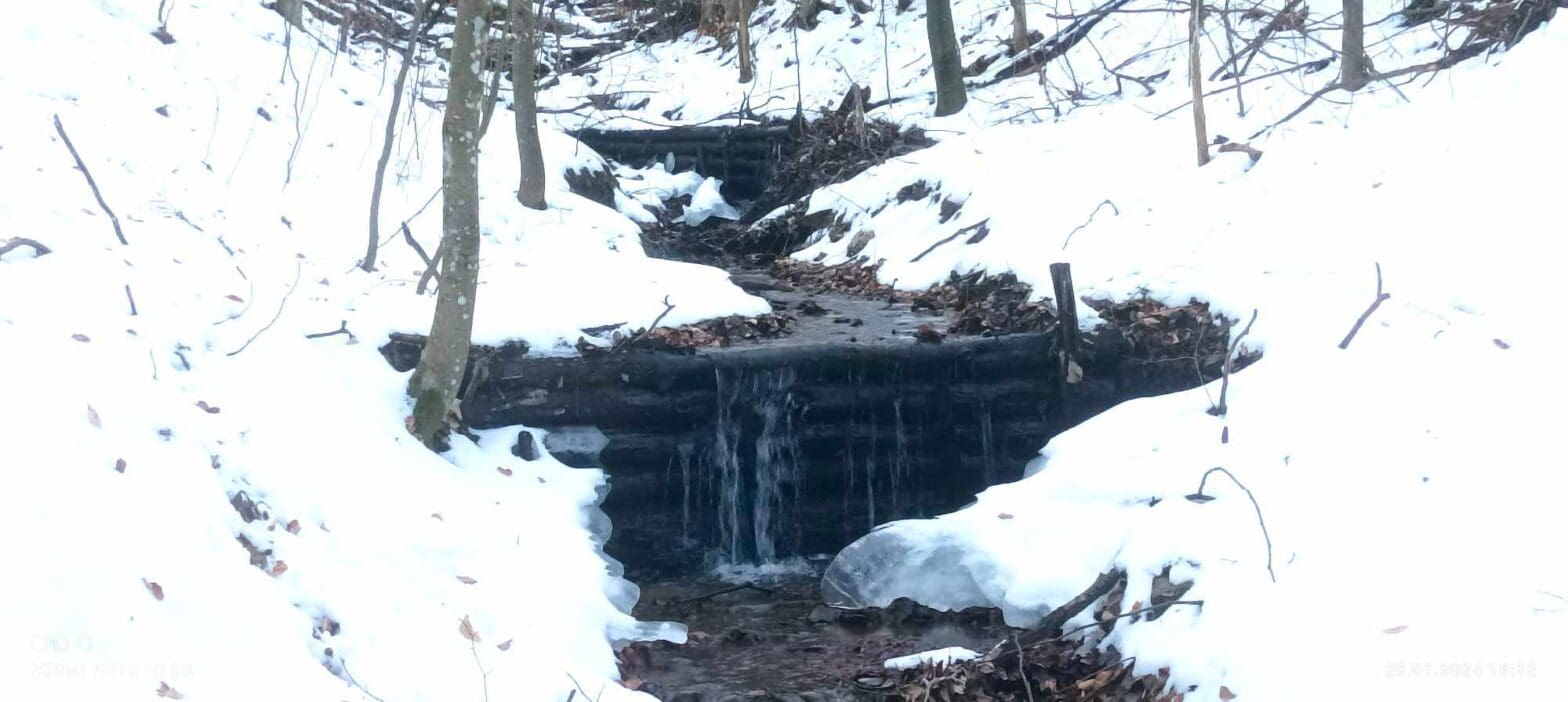As Valentine’s Day approaches, we invite you to experience a romantic journey in a winter wonderland. As the temperatures rise in February or earlier in our warming world, the snow melts, and we realize that the water cycle is a precious gift from the sun to all living creatures on Earth. Without the sun’s energy, the ocean, and the soil, we wouldn’t have this life-sustaining water cycle.
What is a water cycle?
The daily cycle of water sets in motion the beginning of our everyday lives and the stability of climate and ecosystems. The sun’s rays heat and awaken the plants, streams, and lakes each day, starting with a morning kiss. The dew water droplets playfully dance – they evaporate from soil and lakes, and transpire from plants, rising back up into the sky in an invisible symphony of moisture and clouds. There, the magic happens at the dew point, and fresh raindrops descend to the ground and nourish all living beings, from tiny insects to mighty beasts, above and below the surface. Witnessing this magnificent explosion of life is a wonder to behold, all thanks to the enchanting, sun-kissed water cycle.

Isn’t it amazing to see how the snow and water surrounding us circulate, all thanks to the natural laws of physics, chemistry, and biology?
Life on our stunning blue planet is kept in balance thanks to the warmth of the sun and the plants that have evolved to maintain the perfect climate – not too hot, not too cold – just right for life to thrive. It’s a wonderful display of the delicate balance between all our planet’s elements.
Nature does not conform to our fast-paced trends. During its life on land, water slowly takes time to circulate in our veins, plant tissue, and soil.

What you are viewing here is not a cascading creek but a slow water affair carrying the melting snow and healing a dry erosion gully that existed here five years ago. In the past, human-induced land degradation had caused upstream soil erosion, turning the slope into a gully. During heavy rains, stormwater would rapidly flow through, carrying soil nutrients and debris into people’s living rooms near downtown Košice, Slovakia. Today, it presents an opportunity to implement measures that can help prevent erosion, restore soil health, and promote biodiversity in the area.
We have reached out to Michal Kravčík to obtain more information. We believe that the information he provided could be helpful for those looking to prevent excess moisture in their house or basement during the wet winter months in the Northeast. He has shared some valuable insights about this project with us via email:
These check dams are now filled with sediments that used to drain with floodwater into town. In the past, water managers downstream had to dredge every 3-4 years before the tributary creek flowed into the river Hornád. Now, these sediments remain in the forest, creating life-giving watering holes for wildlife! While visiting the levees last week, we saw many animal tracks, which is just incredible. Moreover, raised water levels have increased groundwater levels, providing nearby trees with better conditions for growth. This project is an excellent example of what people can achieve when they work together towards a common goal.
Building check dams with rock or logs requires a good understanding of hydrology to avoid collapse, clogging, or rechanneling. We strategically built a series of check dams in an erosion ravine to effectively retain sediments caused by erosion and simultaneously elevate the bottom. This sediment retention space facilitates water accumulation, allowing for increased groundwater levels. Such a design protects riparian zones, prevents , and provides prevents channel incision and reduced infiltration, and provides moisture availability for vegetation. As a result, we observe an increased water retention time and slowed flow rate following rainfall.

In Slovakia, small dams built for restoration are called “hrádzky.” This practice dates back to the methods of our ancestors and foresters. It is a testament to the idea that farmers make excellent landscape managers, as Professor Jan Pokorný often says. In Australia, Peter Andrews and his team at Natural Sequence Farming call these dams “leaky weirs.” Our ancestors learned from the best ecosystem engineers, the beavers. Today, some restoration practitioners and researchers refer to these dams as “beaver-dam analogs” (BDAs) .
During our survey last week, we spotted tracks of hoofed game alongside other paw prints and traces of birds. These tracks were larger in size, and although I am not a hunter, I assume they belong to deer, hares, and birds. Unfortunately, I did not capture any pictures of them.
Written by Zuzka Mulkerin, in cooperation with Michal Kravčík.

Michal Kravčík has co-founded the Voices of Water Program @ Biodiversity for a Livable Climate with Jan Lambert in 2017.
- He won the 1999 Goldman Environmental Award for a water project that prevented the flooding of seven historic Slovak townlets threatened by the construction of a large dam due to water demand. He revitalized water resources while galvanizing the support of local communities by proposing effective democratic alternatives. These included smaller natural infrastructure dams, decentralized water management, and restored farmlands. This proved to be a cost-effective way to sustain both people and ecosystems. Watch a 5-minute video of thriving communities that could stay and flourish in their ancestral lands.
- A founder of People and Water NGO in Slovakia and a former government-appointed coordinator of the integrated restoration of watersheds in Slovakia, where he designed an extensive scale flood protection and aquifer recharge program for 500 towns and villages.
- A chair of Water Holistic consulting company that models and implements nature-based solutions to protect freshwater streams and watersheds for nature and local economies, helping to create climate-resilient communities.
- A leading co-author of the book “Water for Climate Healing – A New Water Paradigm” (2007) elucidated that natural processes and living organisms contribute to water movement within small water cycles on land, thereby dissipating solar energy through plants and water.
- A tireless watershed restorer and educator who understands that rainwater is a gift and the water cycle is powered by solar energy, plants, and biodiversity.

Zuzka Mulkerin brings her perspective from having lived behind the iron curtain in Slovakia and currently lives in New Jersey. Born in Czecho-Slovakia, she was a nature activist and a program coordinator for a local organization, Tree of Life, and a Global Catholic Youth Movement since her college days. Her collaboration with the People and Water NGO, the Water Holistic group, and its founder Michal Kravčík since 2020 led her to Biodiversity for a Livable Climate, where she had the privilege to work with Jan Lambert, a friend and the co-founder of Voices of Water. She hopes to continue being a voice for ecosystem-based water renewal, supporting a sustainable community-based new water paradigm.

